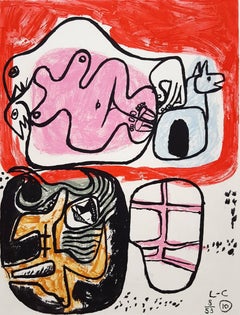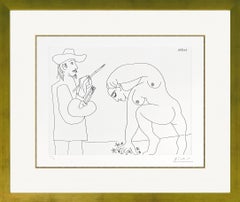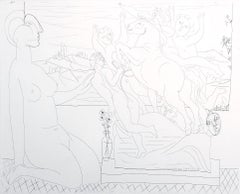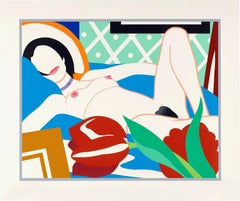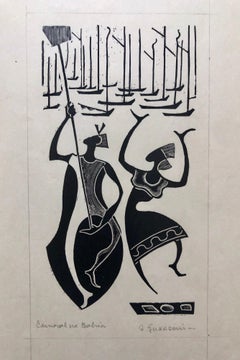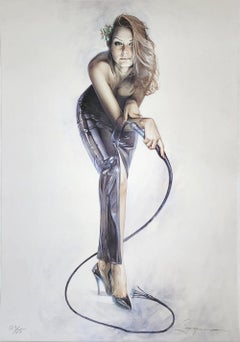Florida - Nude Prints
1960s Surrealist Florida - Nude Prints
Etching, Aquatint, Intaglio
1970s Cubist Florida - Nude Prints
Etching, Paper
1930s Cubist Florida - Nude Prints
Etching, Intaglio, Laid Paper
1980s Pop Art Florida - Nude Prints
Board, Screen
1940s Art Deco Florida - Nude Prints
Woodcut
1990s Pop Art Florida - Nude Prints
Offset
1990s Contemporary Florida - Nude Prints
Offset
1970s Surrealist Florida - Nude Prints
Gold Leaf
1970s Surrealist Florida - Nude Prints
Paper, Lithograph
1980s Contemporary Florida - Nude Prints
Screen
1970s Contemporary Florida - Nude Prints
Paper, Lithograph
1970s Surrealist Florida - Nude Prints
Engraving, Intaglio
1970s Realist Florida - Nude Prints
Offset
1910s Expressionist Florida - Nude Prints
Lithograph
1990s Florida - Nude Prints
Lithograph, Paper
1980s Pop Art Florida - Nude Prints
Screen
1990s Surrealist Florida - Nude Prints
C Print
1980s Contemporary Florida - Nude Prints
Paper, Lithograph
20th Century Surrealist Florida - Nude Prints
Watercolor, Etching, Aquatint
1980s Pop Art Florida - Nude Prints
Etching, Aquatint
1930s Cubist Florida - Nude Prints
Paper, Engraving
16th Century Old Masters Florida - Nude Prints
Intaglio, Laid Paper, Engraving
1980s Contemporary Florida - Nude Prints
Screen
1970s Modern Florida - Nude Prints
Paper, Etching
20th Century Florida - Nude Prints
Etching
1960s Modern Florida - Nude Prints
Lithograph
20th Century Florida - Nude Prints
Etching
1920s Modern Florida - Nude Prints
Etching, Intaglio
20th Century Florida - Nude Prints
Etching
20th Century Florida - Nude Prints
Etching
20th Century Abstract Expressionist Florida - Nude Prints
Lithograph
1990s Modern Florida - Nude Prints
Screen
20th Century Florida - Nude Prints
Etching
1930s Cubist Florida - Nude Prints
Paper, Etching, Engraving, Aquatint
1980s Contemporary Florida - Nude Prints
Screen
1960s Cubist Florida - Nude Prints
Paper, Etching
20th Century Florida - Nude Prints
Etching
1970s Pop Art Florida - Nude Prints
Lithograph, Offset
21st Century and Contemporary 85 New Wave Florida - Nude Prints
Screen
Early 2000s Contemporary Florida - Nude Prints
Linocut
20th Century Florida - Nude Prints
Etching
Mid-20th Century Surrealist Florida - Nude Prints
Etching
20th Century Modern Florida - Nude Prints
Lithograph
1970s Pop Art Florida - Nude Prints
Screen
1980s Pop Art Florida - Nude Prints
Board, Screen
1990s Pop Art Florida - Nude Prints
Paper, Lithograph
1980s Contemporary Florida - Nude Prints
Screen
1910s Expressionist Florida - Nude Prints
Engraving, Woodcut
1980s Cubist Florida - Nude Prints
Paper, Lithograph
1990s Contemporary Florida - Nude Prints
Linocut
1990s Contemporary Florida - Nude Prints
Paint, Monoprint, Oil
1960s Cubist Florida - Nude Prints
Paper, Aquatint
1980s Expressionist Florida - Nude Prints
Lithograph, Offset
1980s Contemporary Florida - Nude Prints
Screen
21st Century and Contemporary Contemporary Florida - Nude Prints
Archival Pigment, Screen
1980s Pop Art Florida - Nude Prints
Paper, Drypoint, Etching, Aquatint
1980s Pop Art Florida - Nude Prints
Steel
2010s Pop Art Florida - Nude Prints
Acrylic Polymer, C Print
1980s Pop Art Florida - Nude Prints
Steel
1970s Pop Art Florida - Nude Prints
Lithograph
